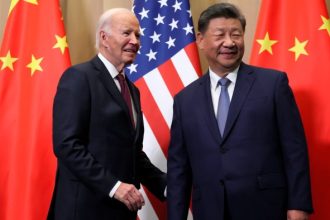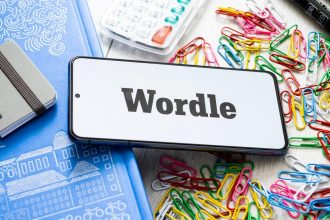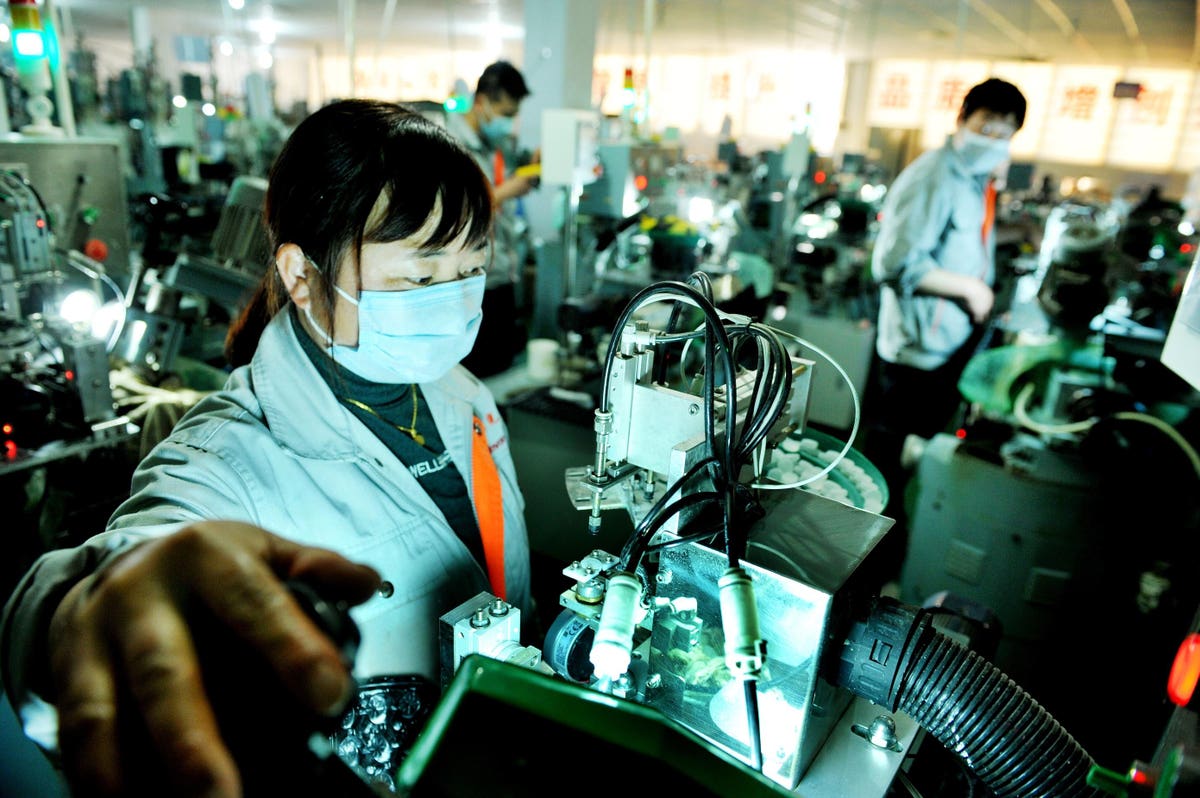In 2012, a Senate Armed Services Committee investigation found a million counterfeit parts, mostly from China, in the Department of Defense’s supply chain. In 2023, Chinese materials, components and software remain in the supply chain and they’re not just counterfeit.
In 2019, commercial data analytics firm, Govini, was awarded a five-year $400 million contract from the Pentagon to deliver data, analysis and insights into DoD spending, supply chain and acquisition using a database it continues to compile.
The company expanded that database during the Pandemic, analyzing the previous five years of government-wide and DoD spending including identifying and characterizing suppliers within all of the DoD contracts for the period. It was a “ridiculously large undertaking,” says Govini CEO, Tara Murphy Dougherty.
Govini took on the task by applying artificial intelligence and machine learning algorithms to the data it collected. It then processed and horizontally linked thousands of disparate data sources.
“That’s where we get these unique insights, by being able to make those connections algorithmically,” Dougherty affirms.
A number of those insights are detailed in a recently released National Security Scorecard which tracks 12 technologies Govini considers critical for national security. These include technologies integral to the Pentagon supply chain and foreign influence & adversarial capital.
The Scorecard’s findings illustrate little in the way of improvement in blunting Chinese penetration of the DoD supply chain in the last 10 years. It notes that while the U.S. government is banned from contracting directly with numerous Chinese companies, “military contractors of 12 critical technologies – from biotech to nuclear modernization and hypersonics – still rely heavily on prohibited Chinese suppliers.”
According to Govini, China houses the highest number of foreign Tier 1 suppliers in microelectronics – eight of which are known prohibited suppliers. This shows the probable expansion of the electronic component issue already recognized in the defense industrial base. In 2016, the U.S. Air Force identified avionics in 50 weapons systems — from satellites to the F-35 — with embedded Chinese-related hardware vulnerabilities.
While electronics, particularly semiconductors, have received attention in the media and from the Trump and Biden administrations, they represent but one of numerous areas where Chinese, materials, components and personnel are integrated into U.S. defense contracting and acquisition.
Ms. Dougherty says the Scorecard, “validates in an empirical way that China is absolutely an indirect supplier to the United States Department of Defense.”
Govini found that the broader government, including DoD, has 922 Tier-one Chinese artificial intelligence suppliers and 552 Tier 2 AI suppliers. The AI category spans a variety of sub-segments including data integration, autonomy, machine learning, computer vision and natural language processing.
“The vulnerabilities apply to a whole subset of critical applications of artificial intelligence in government and the national security sector,” Dougherty observes.
America’s reliance on foreign optics suppliers continues to show up in the data as well with Govini identifying 45 Chinese Tier 1 suppliers for optical sighting and ranging equipment for DoD.
The impact of Chinese supplier presence in the acquisition chain can be seen across the defense enterprise. The risk such interconnection presents is underlined by the hundreds of billions of U.S. taxpayer funding that the Army, Navy, Air Force and other government agencies spend on the 12 critical technology categories – a portion of which goes to Chinese firms/interests – that Govini analyzed.
Some of this is unavoidable in today’s globalized economy Doughtery says. “Our supply chains, including those of DoD, create inextricable links among different countries and that includes adversarial countries.”
A 2021 Defense Critical Supply Chain Task Force report issued by a bipartisan congressional task force concluded much the same. But some links could be avoided. They include contacting with U.S. firms with subsidiaries that sell to or work with Chinese defense companies or their offshoots.
Last March it was revealed that northern California-based tech firm AXT
XT
A 2018 report from Virginia-based supply chain management consultant, Interos Solutions Inc. identified IT and communications equipment supplier links between CETC and Intel
INTC
HPQ
IBM
MSFT
Since then, at least 20 CETC subsidiaries and divisions have been blacklisted by the U.S. government. But it remains unclear if CETC and its associates are still integrated in the DoD communications and materials supply chain through the above companies.
While the CETC example may be difficult to fully identify and grasp, others are alarmingly straightforward.
They include the example of Ford Motor
F
The Biden administration’s mandate that the Pentagon transform its fleet of non-tactical vehicles into battery-electric zero emission vehicles by 2035 will see Ford EVs with CATL batteries acquired for DoD through the General Services Administration (GSA).
These and a fountain of other examples within and beyond the scope of Govini’s Scorecard report suggest a defense establishment better able to describe Chinese penetration of its supply chain but willing to do little about it – if it is indeed paying attention.
While pointing to data in Govini’s report, Ms. Dougherty struggled to cite examples of use of that data to promulgate responses or policy deterring Chinese involvement in DoD acquisition and supply.
As a former chief of staff for Global Strategic Affairs in the Office of the Secretary of Defense, she says the data disadvantage that Pentagon offices experience with respect to supply chain transparency “is something I experienced in the Pentagon and which I think remains true in many ways.”
Yet it’s not clear that Govnini’s reports are making a difference. I queried U.S. Air Force, Army and Navy headquarters regarding their concerns about China’s participation in the Pentagon supply chain and about their sourcing of data to gain visibility into it. The Army and Navy offered no response by press-time but the Air Force did.
Noting that it takes Chinese influence seriously, the Department of the Air Force (DAF) stressed that identification of Chinese activities and suppliers is a “whole-of-DAF” effort. As to where it sources data, the Air Force said, “DoD has built in-house capabilities and continues to… look for solutions that are easy to use, shareable, scalable, and affordable.”
There was no mention of Govini.
The company’s CEO says the information that Govini provides has an impact at various DoD program offices but she did not offer specific examples. At the behest of the Pentagon’s research laboratories (AFRL, ONR, ARL, etc). Dougherty says her firm has looked at the issue of Chinese personnel in the supply chain.
“The personnel aspect is real. It’s hard [to characterize] because of the language barrier. Things like academic literature, patent filings, professorships, grants, team management personnel, board member affiliations are [sources] for how you piece all of that together.”
But the upshot of what Govini found, and what the labs might do about it, wasn’t specified. There is “spotty coverage of the application of these kinds of insights paired with action to make change,” Dougherty acknowledges.
This is very likely the result of crushing inertia within DoD and the government in general, a problem many observers would affirm.
But it may also indicate less-than-heightened interest in Govini’s product. Given that the company is receiving approximately $80 million per year, that product should be expected to be of such value that it cannot be ignored.
Govini itself does not report or measure DoD success in making headway, either because there’s little to report or, as Dougherty opines, “that’s the Department’s story to tell – not Govini.”
Last fall’s revelation that China-sourced raw material for magnets used in the F-35 drove the Pentagon to temporarily suspend deliveries of the fighter while another material supplier was found is a sign of some progress Dougherty asserts.
But she notes that, “You can have all the statutory requirements not to buy from these companies. You can have executive orders saying we need to understand rare-earths supply chains and identify risk. But if you don’t mandate wholesale change to the people in acquisition, their behavior will only be marginally impacted.”
Taiwan is the 6th largest Microelectronic supplier to the US Government with 193 suppliers detected, and has two
Read the full article here





